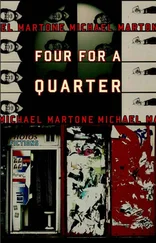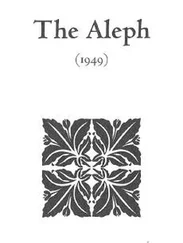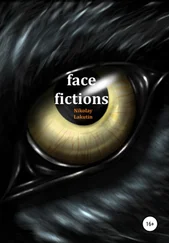E.T., the illegalized, dark-skinned alien, violates the boundariesboundaries and borders of white suburbiasuburbia, and the governmentgovernment acts quickly to try and re-establish controlcontrol over the imperial nation’s privileged social space.27 Moreover, on the larger scale of the national home, the U.S. government’s determinationdetermination to capture any illegal alien also involves an act of force against its own citizens, whose suburbansuburbia home is invaded in E. T. by state officials (FIGURE 7). As the internment of Japanese Americans during World War IIWorld War II (David M. KennedyKennedy, David M. 748–760) or more recent US policies in the wake of 9/11 or have shown, when ‘homelandhomeland securityhomeland security’ is supposedly at stake, the oft-proclaimed sanctity of the private home quickly becomes irrelevant for the very powers supposed to protect it.28 Both these historical examples highlight the crucial analytical importance of relating particular, small-scale homes to their broader social, cultural, and historical contexts – and it is precisely the politics and ethicsethics of homes situated in a metropolitan center that will constitute a key theme in the discussion in chapter three of Virginia WoolfWoolf, Virginia’s Mrs. Dalloway .
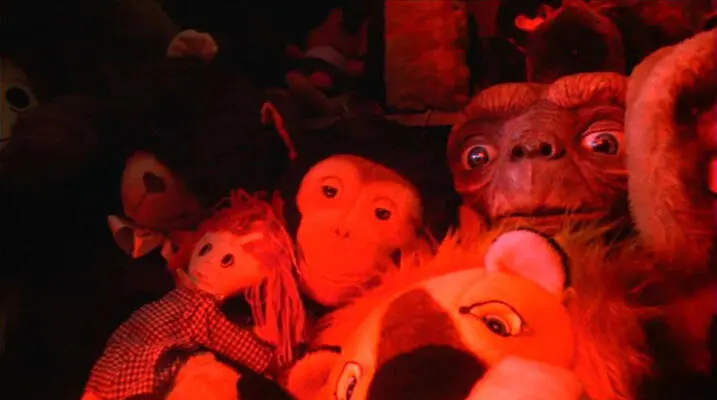 FIGURE 5:
FIGURE 5:
E.T. happens to hide right next to a monkey doll. (Screenshot from E.T. ; © by Amblin/ Universal Studios, used by permission.)
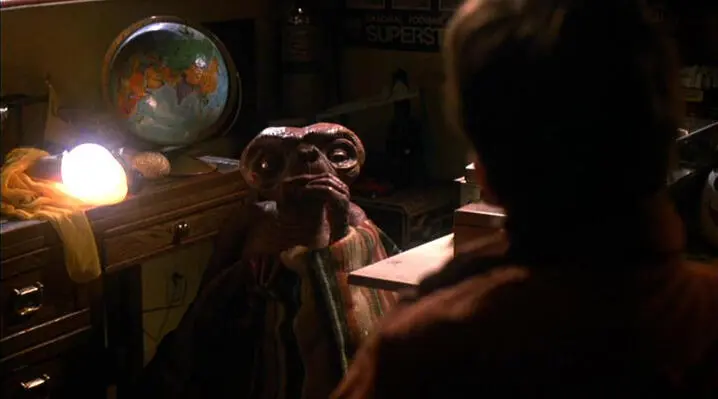 FIGURE 6:
FIGURE 6:
The globe next to E.T. shows two ‘non-white’ continents: AfricaAfrica and AsiaAsia. (Screenshot from E.T. ; © by Amblin/ Universal Studios, used by permission.)
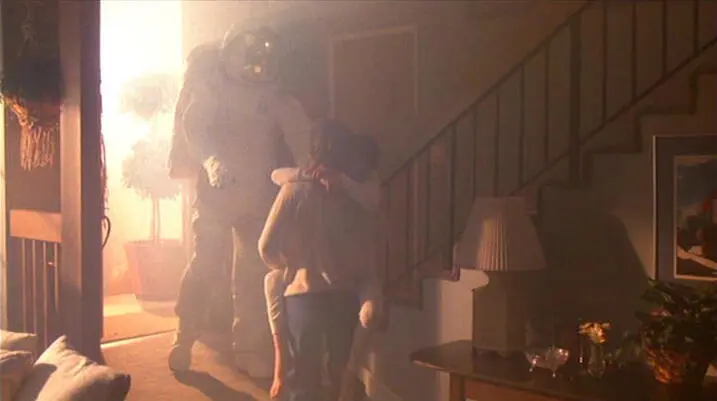 FIGURE 7:
FIGURE 7:
Government officials invade the home they are supposed to protect. (Screenshot from E.T. ; © by Amblin/ Universal Studios, used by permission.)
The Return of the Repressed: History, the Family, and the Freudian Uncanny
While homes in general are shaped by larger power structures, the particular agents of domination often reside in the home itself, with some inhabitants exerting a truly tyrannous controlcontrol over the minds and bodies of others (DouglasDouglas, Mary, “The Idea of Home” 277). Children, for instance, are often seen as key inhabitants of truly homelyhomely homes, but many parents do not grant them much “agencyagency in the running or representationrepresentation of these homes” (BluntBlunt, Alyson and DowlingDowling, Robyn 115). Such familial domination in fact plays an important part in E.T. , for it is because Elliott’s mother would surely not allow E.T. to stay that the boy hides him from her. Indeed, given that Elliott at one point literally keeps E.T. in the closet, his fear of parental sanction may productively be read from a queerqueer perspective: the alien, it seems, must not come out. More generally speaking, what counts as a ‘proper’ or ‘homely’ home very often depends on individuals’ physical and moral conformityconformism and conformity to cultural ideals and prejudices, and the supposedly private family home often serves as one key site where these values are passed on to future generations.
To some extent the formative influence of childhoodchildhood homes explains the widespread assumption that learning more about someone’s home tells us something about the kind of person they are. As we have already seen, it is precisely this assumption that motivates Elliott to convey the meaning of “home” to E.T.: the boy wants to find out where the alien comes from in order to understand what kind of being he is. Such a “conflation of home and selfself” is, as Rosemary MarangolyGeorge, Rose Marangoly George points out, a central trope in various disciplines: “literary theory, architecturearchitecture, sociology, political sciencescience, geographygeography, philosophyphilosophy and psychology” (19). At the same time, MarangolyGeorge, Rose Marangoly George highlights the danger inherent in conflating home and self, as those who are homeless, or who happen to live in ‘deviant’ homes, may easily come to be judged as faulty selves (24). This is all the more so because, as BluntBlunt, Alyson and DowlingDowling, Robyn observe, in any given society or culture “a central feature of imaginaries of home is their idealizationidealization: certain dwellingdwelling structures and social relations are imagined to be ‘better’” (100). Historically specific ideals of a ‘stable home’ help explain, for instance, why ‘unsettled’ nomadsnomads have repeatedly been regarded as a threat to societal order, with the nineteenth century in particular witnessing a worldwide onslaught on nomadic ways of life (BaylyBayly, C.A. 434; OsterhammelOsterhammel, Jürgen 173).
In addition, the formative influence of childhoodchildhood homes is one reason why the family is of such crucial importance to the discoursediscourse of psychoanalysispsychoanalysis and psychoanalytic criticism. In her study Figurations of Exile , Barbara StraumannStraumann, Barbara even suggests that psychoanalysispsychoanalysis and psychoanalytic criticism is “the most paradigmatic critical discourse of twentieth-century culture to address questions of identity and belonging as well as the fundamental dislocation subtending all subjectivitysubjectivity” (13). FreudFreud, Sigmund, for instance, famously used a bourgeoisbourgeois domestic metaphormetaphor when he argued that the ego “is not master in his own house” ( Introductory Lectures 285), and such concepts as the family romancefamily romance and the OedipalOedipus complex triangle between mother, father, and child, are of course central to psychoanalyticpsychoanalysis and psychoanalytic criticism endeavors. In addition, in later texts – such as Group Psychology and the Analysis of the Ego (1921) or Civilization and Its Discontents (1930), FreudFreud, Sigmund explicitly addresses the question of belonging to larger social structures.29
The most frequently evoked text by FreudFreud, Sigmund on the issue of home is, however, his essay on the uncannyuncanny: a type of fear that arises when one is confronted with something that seems other to oneself, but which in fact represents a repressed, unassimilated part of the selfself. Noting that the German word unheimlich (‘uncanny’) not only contains the word heimlich (‘secret,’ ‘hidden,’ or ‘covert’), but is also related to the homelyhomely and familiarfamiliarity (e.g. das Heim , heimelig ; “The Uncanny” 126–134), FreudFreud, Sigmund argues that the uncanny is best understood as “something that was long familiarfamiliarity to the psyche and was estranged from it only through being repressed” (148).30 The doubledouble or Doppelgänger or Doppelgänger is, for FreudFreud, Sigmund, one particularly frequent motif associated with the uncanny (141), and E.T. in fact functions as the uncanny double for Elliott. As Julia KristevaKristeva, Julia notes, initially one’s encounter with the doubledouble or Doppelgänger “is a shock” ( Strangers to Ourselves 188) – and in SpielbergSpielberg, Steven’s film, shock is Elliott’s first reaction at seeing E.T. when the boy stumbles upon him in the field behind his suburbansuburbia home.31 Crucially, E.T.’s reaction mirrors Elliott’s precisely, and they flee from each other in panic. In time, however, Elliott overcomes his initial reaction of shock and coaxes E.T. to the safetysafety of his room. There, E.T. soon becomes sleepy, and Elliott, too, drifts off to sleep, as if to emphasize the extent to which they mirror each other. In a later sequence, in the course of which Elliott explains the contents of his room to E.T., the alien tries to eat Elliott’s toy carcar, prompting the boy to exclaim: “Hey, wait a second! No! You don’t eat ’em. Are you hungry? I’m hungry” (MathisonMathison, Melissa 69). The emotional parallel between them thus continues, and while Elliott goes to the kitchen to grab some food, E.T. explores the boy’s room and finds an umbrella. Suddenly, the umbrella opens and startles, not only E.T., but also Elliott, who is still downstairs in the kitchen. This moment makes it clear to the audience that there is a mysterious telepathic link between the two – and FreudFreud, Sigmund explicitly mentions telepathytelepathy as yet another motif typically associated with the uncanny (141).
Читать дальше
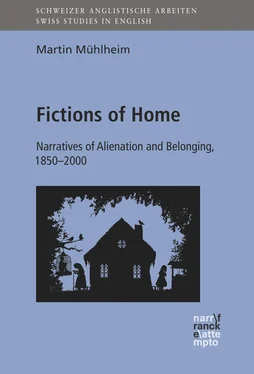
 FIGURE 5:
FIGURE 5: FIGURE 6:
FIGURE 6: FIGURE 7:
FIGURE 7: